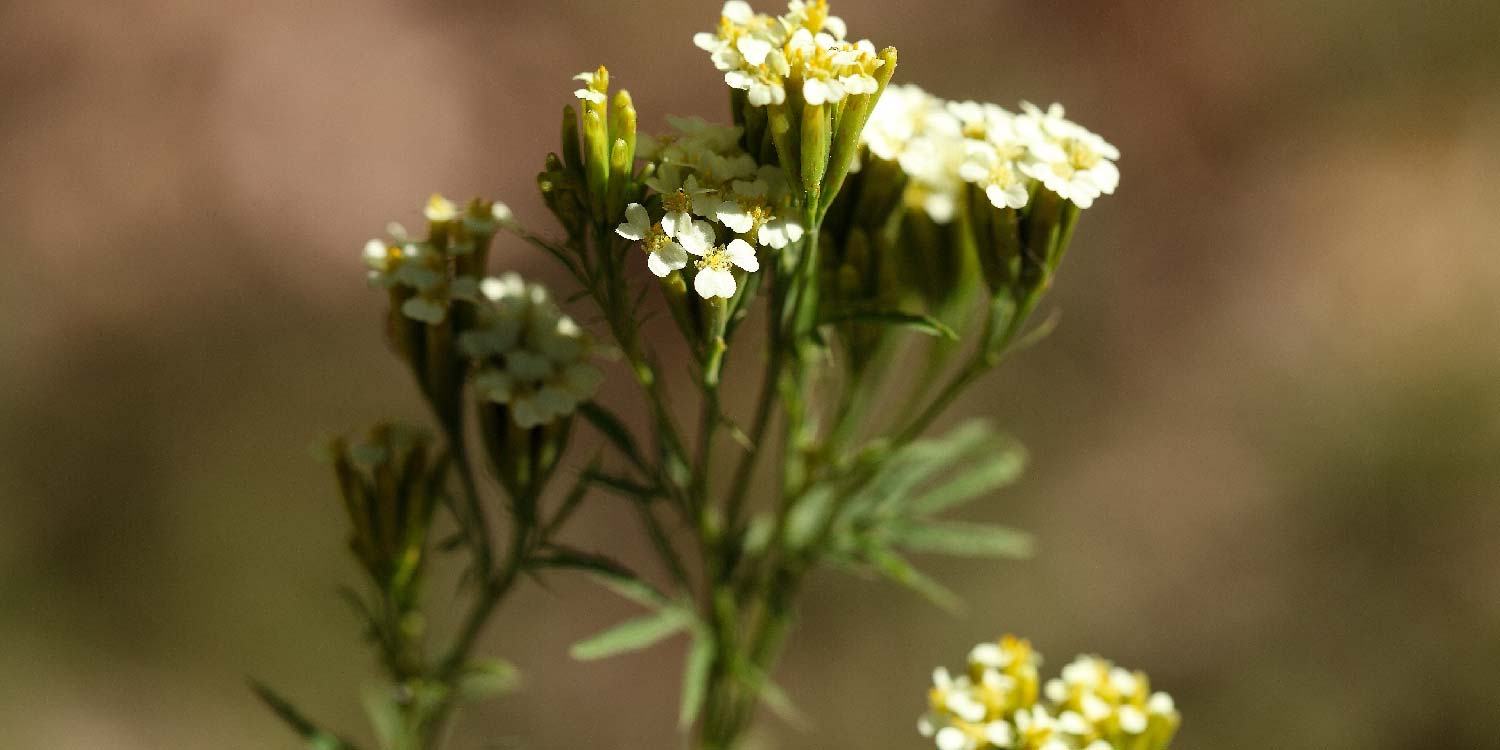Mexica Marigold (Tagetes minuta) is an erect woody annual herb usually 0.5m-2m tall with strongly odorous foliage. The taproots are usually short and tapering, and surrounded by fibrous and roots which form mycornhizal associations .Its stem are typically erected, woody, and grooved or ridged. Initially green but often maturing to brownish or reddish.
They are usually branched only in the upperparts, unless broken or cut off near the base. Its leaves occur in opposite pairs on the main stem and usually singly on the laterals. Leaves are 5-20cm long slightly glossy-green and are pinnately compound with 4-6 pairs of pinnae opposite below and alternate or opposite above. Leaflets are narrow lanceolate sharp toothed and 2-4 cm along
Underside of the leaves bears a number of small punctuate orange multicellular glands which exclude a licorice-like atom when raptured gland occurs beside the midribs and towards the margins of each leaflets and may also be found in the stem and involucre bracts. Scented panicle-like inflorescence consist of 20- 80 narrow cylindrical flower heads.
Heads are small 10-15mm long and 3-4 mm in diameter surrounded by 4- 5 fused involucre bracts and dotted with glands not sprinting apart at maturity. Seedlings have apogeal germination. Slender, often reddish. Hypocotyls are 1.0-1.5 cm along and end in elongate cotyledons about 1cm long which are often reddish below. The first pair of leaves are deeply decided into 3 segment with large terminal lobe and have irregularly toothed edge.
Distribution
Mexican marigold originated in South America, and has been deliberately distributed across the tropics, subtropics and several temperate countries as ornamental medicinal or perfume pant as well as accidentally as a weed. In Kenya was first recorded as an Allen weeds during the 1920s.
It was originally restricted to the higher altitude, but has since spread to lower altitude, but has since spread to lower altitude a results of increasing agricultural activities. Was also introduced in California USA to control root-knot nematodes in orchards, but had since become an invasive weed.
Ecological requirements of the weeds
Mexican marigold is capable of rapid growth and seeds production (about 29,000) seeds per plants, enabling it to invade ephemeral habitats which provide at least seasonally a medium to high temperature, ample water, light and nutrients and minimal competition from perennial plants. Grows in moist and areas, from sea legal to reasonable altitude in the tropics ad subtropics and soil PHs ranging from 4.3 to 6.6.
Thrives under high nutrients and high soil moisture connections. The weed tolerant low rainfall. It’s commonly found along streams and river banks. It can colonize waste areas, neglected range land and also poorly managed fields.
Disadvantages of Mexican Marigold
- Its acts alternative host that harbor pest, diseases and other micro-organisms.
- Compete with the crop for water, soil, nutrients, light and space .This leads to reduction in crop yields.
- Its leaves allopathic residues in the soil .The roots exude polyacetylene derivatives which delays germination and reduces the yields of crop in the soil previously infested with the species.
- It’s a fast growing annual weeds which compete with crop and interferes with their management or harvest.
- It increases the cost of production.
- When the seeds of Mexican marigold mix with the produce lowers the quality.
- Adaptation of Mexican marigold weeds to various environmental conditions.
- The plant is propagated by seeds which germinate over a period of 48 hours.
- Seeds do not require light for germination, however they respond to it positively, so that germination only occurs from seeds from seeds near the soil surface and most seedling emerge from depth of less than 6mm.
- They produces enormous quality of seeds.
- They have the capacity to withstand adverse conditions in the fields because they can modify their seeds production and growth according to availability of moisture and temperature.
- They can germinate under adverse soil moisture condition.
- They have short period of plant growth generally grow at fast rate and produces seeds earlier than most of the crop.
- The seeds can remain viable in the soil for a long period without missing their viability.
GREENLIFE SOLUTIONS FOR THE CONTROL OF MEXICAN MARIGOLD
CATAPULT 480 SL
Non- Selective post emergence herbicides, to control Annual and perennial grasses and broad leaved (Mexican marigold) weeds. Use during Land preparation to clear all weeds.
Rate of Use: 2.0Litres per Hectare (250ml in 20L)
WEMBE 200 SL
Non- Selective post emergence herbicides for control Annual and perennial grasses and broad leaved (Mexican marigold) weeds. Use during Land preparation to clear all weeds especially those tougher weeds such as purslane, oxalis etc.
Rate of Use: 3.0Litres per Hectare (300ml in 20L)
GOVERNOR 580 SE
Selective Pre & Early post emergence herbicide, to control Annual grasses and broad leaved (Mexican marigold) weeds on Maize, Sweet corn, Baby corn and Sugarcane. Should be applied when soil is well moisted when use as pre emergence herbicide. Ensure weeds are actively growing when GOVERNOR 580 SE is used as early post emergence.
Rate of Use: 2.5Litres per Hectare (250ml in 20L)
COMMANDER 240 EC
Onion family-Selective early post emergence or Post transplant herbicide, 2-10 days after transplanting Onions and Garlic. Brassica family-Selective Pre emergence or Pre transplant herbicide, should be applied 2 days on well prepared bed before transplanting Cabbages and Broccoli to control Annual grasses and broad leaved (Mexican marigold) weeds.
Rate of Use: 1.0Litres per Hectare (50ml in 20L)






